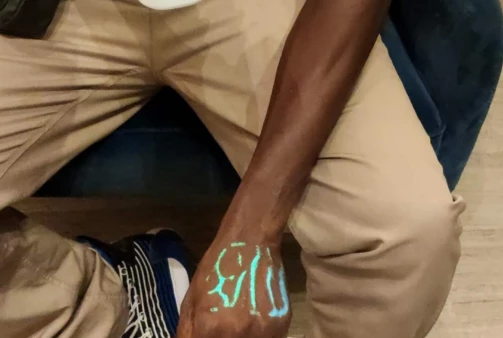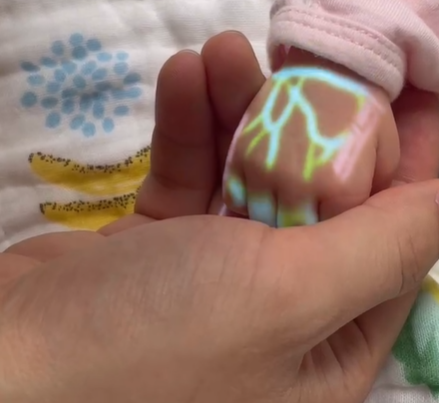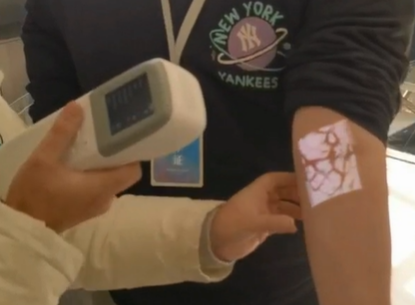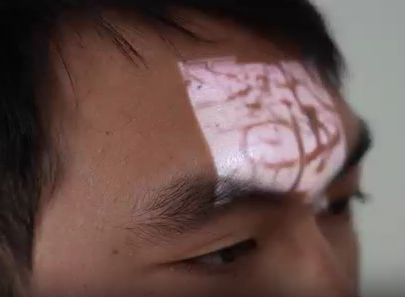Vein viewer operating principle
Vein viewers operate based on the principles of near-infrared light. When activated, these devices emit near-infrared light, which penetrates the skin and is absorbed by hemoglobin in the blood. The device then captures the reflected light from the hemoglobin and processes it to create a real-time image of the veins. This image is then projected back onto the skin, enabling healthcare professionals to visualize the location, size, and path of the veins with remarkable clarity.

Near infrared light for vein viewer
The vein viewer utilizes infrared light technology to aid healthcare professionals in visualizing a patient's veins. These devices typically use near-infrared (NIR) spectrum, which can penetrate the skin, be absorbed by blood, and reflect back to the device, making the veins more pronounced beneath the skin. The infrared spectrum used by these devices ranges from 760nm to 1100nm, differing from the visible light spectrum, thereby enabling better penetration through the skin and other tissues. This technology can enhance the success rate and accuracy of medical procedures such as catheter insertion, IV placement, and blood sampling while reducing patient discomfort and pain. Vein viewers are portable, easy to use, and versatile tools that can contribute to improved patient care and healthcare provider efficiency.
Vein Viewer Advantages
Vein viewers are revolutionary medical devices that provide accurate and non-invasive visualization of veins, enabling healthcare professionals to optimize venous access for a variety of medical procedures.
The key advantages of vein viewers include their ability to accurately identify vein location, size, and trajectory in real-time, minimizing the need for multiple needle sticks and reducing patient discomfort. Their non-invasive approach eliminates the need for traditional techniques and reduces the risk of complications associated with invasive procedures. Vein viewers enhance efficiency, patient experience, and safety, and can be utilized across various patient populations, including adults, children, and individuals with difficult-to-locate veins. They also offer valuable training and educational opportunities for healthcare professionals. As the technology continues to progress, vein viewers will likely play an increasingly critical role in optimizing medical procedures and improving patient outcomes. Here are some key advantages of vein viewers:



Accurate Vein Visualization: Vein viewers offer real-time and accurate visualization of veins beneath the skin's surface. This enables healthcare professionals to identify the exact location, size, and trajectory of veins, reducing the chances of unsuccessful venipuncture attempts and minimizing patient discomfort.
Non-invasive Approach: Vein viewers provide a non-invasive method of visualizing veins, eliminating the need for traditional techniques like palpation or tourniquet application. This reduces patient anxiety and discomfort, particularly for individuals who may be apprehensive about needle sticks or have sensitive skin.
Improved Efficiency: By quickly and accurately identifying veins, vein viewers enhance the efficiency of medical procedures such as intravenous catheter insertion, blood draws, and administering medications. Healthcare professionals can save time by avoiding unnecessary needle sticks and perform procedures with greater precision.
Enhanced Patient Experience: Vein viewers contribute to an improved patient experience by reducing the number of needle sticks required for successful venipuncture. Patients who require frequent blood draws or intravenous therapy, such as those undergoing chemotherapy or dialysis, benefit greatly from this technology, as it minimizes pain, discomfort, and potential complications.
Enhanced Safety: By accurately visualizing veins, vein viewers help healthcare professionals avoid accidental punctures or damage to surrounding tissues. This improves patient safety and reduces the risk of complications associated with invasive procedures.
Training and Education: Vein viewers can also be utilized as valuable teaching tools for healthcare professionals in training. They provide a clear visual representation of veins, allowing trainees to understand the anatomy and gain hands-on experience in vein localization.


